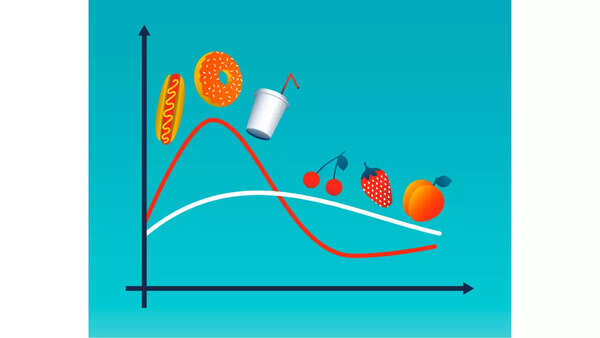
Dr. Terry Shintani reveals a simple method to significantly lower the glycemic index of common carbohydrates like rice, bread, potatoes, and pasta. Cooling cooked carbs and then reheating them transforms starches into resistant starches, slowing digestion and reducing blood sugar spikes. This process can lower the GI by up to 50%, offering a practical way to manage blood sugar levels.
What if you can eat rice and yet not have a drastic blood sugar spike? What if that bowl of mashed potatoes doesn’t cost you all those burpees? Sounds like a dream, right? Not anymore! Now you can have your carb and eat it! Yes, that’s right! Dr. Terry Shintani, MD, a Harvard-trained nutritionist with a massive social media following of over 250K, has shared a surprisingly simple method to cut the glycemic index (GI) of common carbohydrates by up to 50%, potentially transforming how people manage blood sugar and overall health.Before we delve into the technique, let’s take a moment to understand what the glycemic index is.

Carbohydrates are an essential part of a healthy diet. These include your breads, cereals, fruits, vegetables, legumes, and dairy products. What happens when you eat foods that have carbohydrates in them? Your digestive system breaks it down into simple sugars, and that enters the bloodstream. Different carbs have different effects on blood sugar.
For instance, a cookie in the morning can cause a sugar spike in your blood, leaving you wanting to eat more and more carbs. The glycemic index (GI) is a measure of the increase in the level of blood glucose (a type of sugar) caused by eating a specific carbohydrate (food that contains sugar) compared with eating a standard amount of glucose. Foods that have a high glycemic index release glucose quickly and cause a rapid rise in blood glucose.
Foods with a low glycemic index release glucose slowly into the blood.

The glycemic index (GI) affects your body by influencing how quickly carbohydrates raise blood sugar levels. High-GI foods (70+) cause rapid blood sugar spikes, triggering a quick insulin release to regulate glucose. This can lead to energy crashes, increased hunger, and, over time, may contribute to insulin resistance, type 2 diabetes, obesity, and heart disease.
Low-GI foods (55 or below) digest more slowly, providing steadier energy, better blood sugar control, and reduced risk of chronic diseases.
The GI’s impact also depends on portion size, meal composition (fiber, protein, fats), and individual metabolic responses.

Dr. Terry Shintani has now revealed an unbelievably simple technique that can lower the GI of carb staples like rice, bread, potatoes, and pasta. “Yes, you can cut the glycemic index of common carbs by as much as 50%,” he said in a video shared on Instagram. “Here's the secret to lowering the glycemic index of common carbs and it helps you control blood sugar. It's unbelievably simple. Just heat it and cool it,” the nutritionist revealed.For instance, Dr. Shintani recommends cooling the cooked rice in the fridge overnight and then reheating it. “Its glycemic index drops from 78 down to 54,” he says. In case you fancy a toast in the morning, the best way to lower the blood sugar spike is to freeze it and then toast it.
The nutritionist reveals that this process lowers its glycemic index by up to 39%.“For potatoes, cooking, cooling, and reheating can reduce their glycemic index by 30 to 40%. And for pasta, chilling and reheating can cut the glycemic index by up to 50%,” he suggests.
Prince Harry BLASTED For ‘Deadly’ Claims About Royal Family – Friends OUTRAGED Over King Charles Health Reveal
So what happens when you cool the cooked carbs and reheat them? “The process of heating and cooling carbs causes a cross-linkage and restructuring of the starch, turning some of it into resistant starches. This slows the digestion of the starch and causes a slower release of sugar into the bloodstream. So, try this simple hack on your carbs to keep your blood sugar in check,” the nutritionist suggests.

 6 hours ago
39
6 hours ago
39




























 English (US)
English (US)